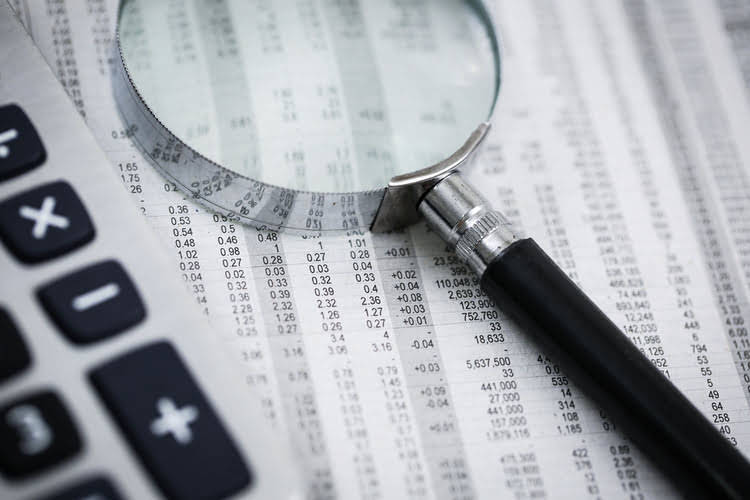
It’s not just about keeping the IRS at bay; it’s about gaining insights into your business to make strategic decisions that enhance your profitability and growth. Let’s dive into the core differences between accrual and cash accounting methods, and how choosing the right accounting method framework can significantly impact your winery’s management. We excel in cost allocation for wineries, allowing you to accurately determine the cost of goods sold for each vintage and varietal. We specialize in serving wineries, allowing us to bring a wealth of industry-specific knowledge and expertise to the table. And if you think that’s enough cost accounting for one day, no – not even close. The wineries prefer to use last in, first out costing to value their ending inventory, since it matches their latest costs against revenue, which should lower their taxable income.

Let’s get you a better winery accountant.
The third step in wine accounting is understanding inventory valuation. Inventory valuation is used to determine the value of your stock at any given time, which is important for making informed decisions about buying and selling inventory. One effective strategy is to establish a robust cash reserve during peak sales periods. By setting aside a portion of the revenue generated during high-demand seasons, wineries can create a financial buffer to cover expenses during off-peak times. This reserve can be crucial for managing costs such as payroll, maintenance, and utilities when sales are slower.
- Wineries are always being asked to contribute their wine to charity auctions.
- Over time, they reveal hidden insights that lead to smarter business decisions.
- And if you’re trying to close the books, this means that the amount of the depletion allowance has to be accrued, and it’s pretty much a guess.
- GAAP and it also makes it easier to spot variances when they do occur.
- Protea Financial has a team of experienced professionals who can help you navigate the complexities of wine accounting.
- It is often their responsibility to ensure that your bills get paid, accounts are billed, and payments are received on time.
Key Financial Metrics for Vineyards and Wineries

We are here to help make the finance part work, so that you can build a successful winery that will sustain itself, and you, for generations to come. Wineries sometimes offer a discount of a certain amount for each case that their distributors sell through to retailers. This is a depletion of a distributor’s inventory, which is where the name comes from. It is important to secure your banking information for privacy, security against fraud, and business continuity. Have a professional look at your cybersecurity risks and implement the right safeguards.
- They offer services such as financial statement preparation, tax planning, inventory management, and cost analysis.
- Exact accounting is required for the most accurate picture of your business.
- By sorting your transactions in a meaningful way, your financial reports will be more meaningful.
- And finally, the bottles are left in storage for a period of months for further aging.
- Wineries are a flourishing growth opportunity for accountants who are knowledgeable about the industry and can provide valuable financial, cost, tax, and risk management guidance.
Asset Accounts
All these costs must be considered when calculating your final price per bottle. By tracking your income and expenses and knowing https://www.bookstime.com/bookkeeping-services/sacramento your profit (or loss), you’ll have a better handle on the financial health of your business. Since the wine industry can be fickle, it is essential to make sure you track everything carefully. Prices can change for each item, season, and even each batch of wine. There’s a wide gulf between financial reporting and management account reporting. Financial reporting operates under GAAP guidelines and allows your company to remain compliant with policy boards.
- If accounts receivable and payable are effectively handled, you’ll get paid on time, cash flow is stable, and relationships with your customers and suppliers are built.
- Then you need to harvest your grapes and go through the entire winemaking process.
- The donated bottled are just not in stock at the next physical inventory count, so they’re charged to the cost of goods sold at the end of the month.
- He began at Moss Adams, where he closely partnered with wineries and food manufacturing companies in California and across the United States.
- Just because QuickBooks Online makes things easier, it can’t do the work by itself!

Then you need to harvest your grapes and go through the entire winemaking process. Once the wine is bottled, aged, and ready winery bookkeeping to sell, you then need to take on the marketing of your product. Let our Compliance team shoulder the burden of complex, ever-changing state and federal wine industry regulations.
- If you have more questions, need confirmation, or just want someone to take bookkeeping off of your hands altogether, we’re here to help.
- Accurate COGS calculations enable better financial planning and decision-making.
- We are a team of humans who believe accounting is more than just checking boxes and filing receipts.
- No more paper files, no more writing checks, no more licking envelopes.
- Climate significantly affects grape growing, influencing the quality and characteristics of the wine.
Accounting Strategies for Vineyards and Wineries
And then there’s vine planting, and setting up windbreaks, and installing a trellis system, and training the vines to grow on the trellis system – and so on. The up-front investment is pretty incredible, which is why mostly rich folks own vineyards. At any rate, most of these expenditures are capitalized, up to the point when commercial production begins. It offers a valuable view of the results and sets the tone for future growth. By following this checklist and consulting experienced experts like the team here at Protea Financial, you can make it through this period at ease and maintain your winery’s bottom line. Contact Protea Financial today to find out more about how we can support your winery’s year-end accounting.
Why Your Winery Chart of Accounts Is Important

Our team of experienced professionals understands the unique financial challenges and opportunities that wineries face. Professional wine accounting services, like those offered by Protea Financial, provide expert guidance in managing complex financial aspects of the wine business. They offer services such how is sales tax calculated as financial statement preparation, tax planning, inventory management, and cost analysis.
While less common in the wine industry due to its potential to undervalue older, high-quality inventory, LIFO can be advantageous in a high-inflation environment. By matching recent, higher costs against current revenues, LIFO can reduce taxable income, offering a tax deferral advantage. However, it’s worth noting that LIFO is not permitted under International Financial Reporting Standards (IFRS), limiting its applicability for wineries operating globally. For small wineries, their bookkeeper or tax preparer will often help them move their bookkeeping from a pure cash basis to a tax basis.
A winery bookkeeper can assist you with virtually any task related to managing your finances. Plus, they work with clients to ensure that invoices are paid in a timely manner and communicate with vendors to make payments. They will also reconcile your monthly bank statements with your internal financial documents and coordinate with the bank if there are any issues. By outsourcing your winery’s bookkeeping to a bookkeeper who understands the wine industry, you can reduce your operating costs. There are several benefits to using an expert bookkeeper that make it worth the cost. By knowing your strengths and weaknesses when it comes to running your business, you know where to reach out to experts.

